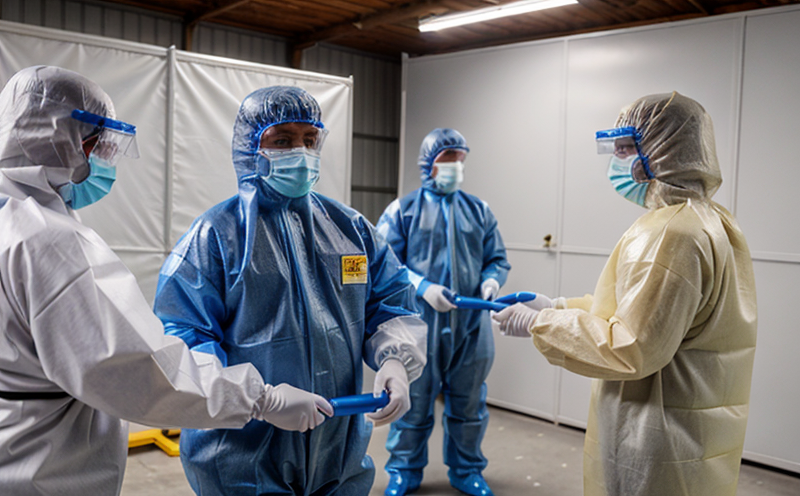Ergonomic performance assessment of industrial workwear
The ergonomic performance assessment of industrial workwear is a critical function in ensuring that protective clothing not only meets safety standards but also enhances the wearer's comfort and efficiency during prolonged use. This service involves a comprehensive evaluation to identify potential discomforts, limitations in movement, or stress points that may affect both productivity and worker well-being.
Our process begins with detailed consultation with clients to understand specific ergonomic requirements based on work environments such as manufacturing floors, construction sites, or hazardous materials handling. This tailored approach ensures that the tests are relevant and meaningful for each industrial setting. Specimen preparation typically involves selecting representative samples of the workwear in question, ensuring they reflect real-world conditions.
The assessment utilizes advanced instrumentation including motion capture systems to analyze how workers move while wearing the clothing, pressure mapping devices to identify areas of excessive strain, and thermal manikins for simulating body heat distribution. These tools provide objective data which can be correlated with subjective feedback from users during field trials.
Based on this analysis, we generate detailed reports outlining any issues identified along with recommendations for design improvements or material substitutions aimed at enhancing user comfort without compromising protection levels. This service is crucial not only in maintaining compliance with international standards but also in fostering innovation within the protective clothing industry by focusing on human factors engineering principles.
| Standard | Description |
|---|---|
| ISO 9241-7:2015 | Guidelines for the design of workstations to minimize discomfort and fatigue. |
| ASTM F2338-20A | Evaluation method for assessing thermal insulation properties of protective garments worn over fire-resistant undergarments. |
Applied Standards
The ergonomic performance assessment service adheres to several internationally recognized standards that guide the evaluation process. These include ISO 9241-7:2015, which provides guidelines for designing workstations with an emphasis on minimizing discomfort and fatigue; ASTM F2338-20A, focusing specifically on evaluating thermal insulation properties of protective garments worn over fire-resistant undergarments.
These standards ensure that our assessments are consistent, repeatable, and aligned with global best practices. Compliance with these norms helps our clients achieve regulatory requirements while also enhancing the overall quality of their products through rigorous testing procedures.
Eurolab Advantages
- State-of-the-art facilities equipped with cutting-edge technology for precise measurements and analyses.
- A team of experienced professionals who possess deep knowledge in ergonomics, textile engineering, and occupational health & safety.
- Dedicated resources to stay updated on the latest developments in protective clothing design and testing methodologies.
- Strong focus on providing personalized solutions tailored specifically to each client's unique needs and challenges.
Use Cases and Application Examples
Ergonomic performance assessments can be applied across various industries where industrial workwear is essential, such as automotive manufacturing, construction, mining, and chemical processing. For instance, in the automotive sector, our services help manufacturers design more comfortable interiors for assembly line workers, thereby improving their overall job satisfaction.
- Construction companies benefit from assessments that ensure their workers remain safe yet agile during physically demanding tasks like bricklaying or scaffolding.
- In hazardous material handling, the findings guide the creation of garments that protect against chemical splashes while allowing for unrestricted movement.





